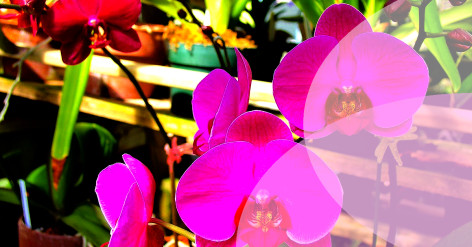Best way to use mulch in your garden

The Root of the Matter: What is Mulch?
Mulching, the process of spreading organic or inorganic matter around plants, provides an array of benefits for your garden, from conserving moisture to maintaining soil health. But how do you harness these benefits effectively? Don't worry, we'll dig into that.
Ground Rules: How to Apply Mulch
Before jumping in with our gardening gloves on, let's understand what mulch actually is. Mulch is essentially a protective covering for soil, creating a barrier between the soil and the environment. This barrier comes in two main forms: organic and inorganic.
Organic forms of mulch include leaves, wood chips, grass clippings, and compost. These materials decompose over time, enriching your soil with essential nutrients. Examples of inorganic mulch, which do not breakdown or add nutrients but serve other purposes, are stones, pebbles, or landscape fabric.
Now, armed with the basic knowledge of the two types of mulch, let's leaf through, and unearth the best ways to use mulch in your garden.
Step 1: Assess the Soil and Plant Needs
Step 2: Prepare Your Garden Beds
Not all plants love all kinds of mulch. For example, Rodale's Organic Life recommends using acid-rich pine needles around blueberries, while asparagus may benefit from salty seaweed. It's essential to be aware of your plants' needs before choosing the right mulch.
Step 3: Apply the Mulch
Before mulching, ensure the soil is moist, and any existing weeds have been removed. Mulch is meant to suppress further weed growth, but it wonât kill existing ones.
A Lean Green Garden: Mulching Strategies to Swear By

Here's where the magic begins. Start adding mulch from the center of your garden bed, working outwards, to avoid stomping on the freshly mulched areas. The University of Vermontâs Extension Department of Plant and Soil Science suggests spreading a 2â4 inch layer of mulch around each plant, remembering to keep mulch a couple of inches away from plant stems to prevent rot and disease.
Repeat the Mulching Process
Armed with the basics, let's delve into some specific mulching techniques and hacks for a happy garden.
Use Mulch as a Temperature Regulator
Remember, organic mulch decomposes and integrates with the soil over time. Your garden benefits from these nutrients but will require that you reapply mulch annually.
Use Mulch to Conserve Water
A layer of mulch acts as an excellent insulator, keeping soil cooler in the summer and warmer in the winter. Applying mulch in late spring, once the soil warms up, can help get the most out of this benefit.
In Full Bloom: The Benefits of Mulching

Mulch can reduce water evaporation from the soil by up to 70%. To aid with this, ensure you water your plants thoroughly before applying mulch.
Just like how the right care cultivates the best plants, appropriate mulch usage can reap generous benefits for your garden.
- Weed prevention: Mulch suppresses weed growth by blocking sunlight.
- Moisture conservation: By reducing evaporation, mulch keeps your soil hydrated longer.
- Temperature regulation: Mulch acts as an insulator, protecting plants from extreme temperature shifts.
- Improved soil structure: Organic mulch breaks down over time, adding valuable nutrients to your soil.
Embracing the power of mulch doesn't have to be a Herculean task. Knowing what type suits your garden, proper application, and useful strategies can go a long way in reaping the benefits of mulch.
Happy mulching!





